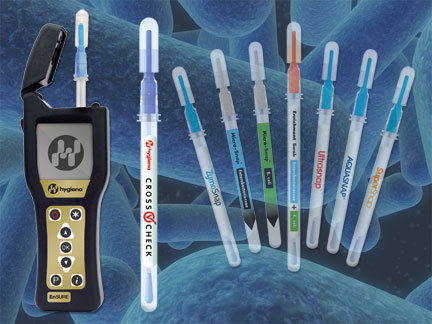

|
Chris Shaw
Editor |
| Home> | CATERING & FOOD HYGIENE | >Equipment & Services | >Detect food poisoning risk |
Detect food poisoning risk
11 December 2014
The Food Standards Agency has highlighted the risk of Campylobacter food poisoning from raw chicken and made several recommendations for reducing the hazards associated with cross contamination.

To help eradicate this risk, Hygiena International have introduced the CrossCheck rapid test system which can be used by anyone and anywhere, with results provided in minutes. Detecting pathogens such as Campylobacter is a difficult, skilled and expensive process giving results after several days. The new CrossCheck simple rapid test specifically measures the presence of raw meat and fish residues giving results in 2 - 5 minutes. If raw meat residues are detected in areas where they should not be then there is a potential risk of food poisoning.
Found in food production environments and even on the outside of food packaging, Campylobacter is spread by cross contamination from raw chicken juice that also helps the bacteria to survive on surfaces. Careful handling and preparation of raw meat and poultry together with high standards of cleaning and hygiene are required to minimise the risk of food poisoning in all food preparation facilities.
CrossCheck is an integrated, self-contained test device that includes a swab for sample collection after which the test is activated with a simple snap and squeeze action. This releases the test reagent into the lower part of the device where it mixes with the sample. The result is generated after 2 – 5 minutes and is measured in a small hand-held instrument (EnSURE) to produce a numerical result in a patented light emitting reaction. The higher the output then the greater the amount of raw meat detected and the greater the potential risk from associated pathogens.
- Officers call in the hit swab
- Test for salmonella
- Approval for bacteria test
- Bacteria test certified
- Improved hygiene standards achieved for animal care
- Improve hospital infection control
- Control norovirus outbreaks
- Fast & accurate salmonella testing
- Hospitals benefit from ATP hygiene monitoring
- Hygiene test is recipe for success





















